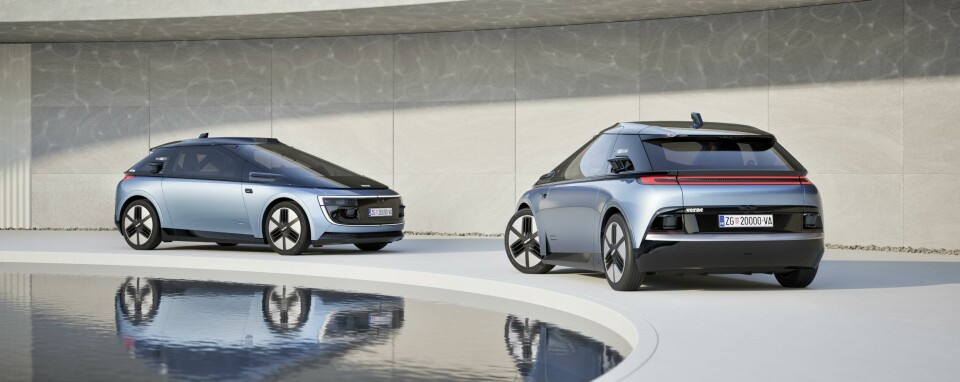
In pictures: Verne – Rimac’s new autonomous mobility bet
Car Design News shares new images of the autonomous mobility start-up backed by the Rimac leadership team
In an interesting turn of events, we learned a while ago that Rimac was trying its hand at a very different market, shifting from electric hypercars to autonomous city shuttles. There is even a dedicated ride-hailing app in the works.
The company – formerly P3Mobility – has been very hush hush, but with the launch of its new brand (named after Jules Verne) it is ready to show off its three-part strategy, built around a new electric autonomous vehicle. Visually, it appears sleek and modern, shunning the popular ‘boiled sweet’ symetrical silhouette and instead taking a conventional hatchback shape.
The windscreen angle is raking, exceptionally so, and almost runs right from the front wheel arch to the B-pillar. We assume this is to create an open, spacious feel in the cabin and to improve visibility for passengers. It is a refreshing take on the robotaxi. Notice also the sliding door, which moves not backwards like a conventional MPV but forwards toward the nose of the car.
Design is being led by Adriano Mudri, the designer of the Rimac Nevera and Concept_One, and the company tells us that the vehicle will look like “nothing you can currently see on the streets.” There will be no steering wheel or pedals, as might be expected, and as such will be autonomous only – no option for driver control here.
Alongside chief design officer Mudri is founder Mate Rimac and Marko Pejković, now CEO of Verne. The reveal in Zagreb was a strategic location, showcasing the vehicle where – in 2026 – it is planned to enter service using its bespoke app and specialised infrastructure.
Crucially, the vehicle is built from scratch as an AV, “free from the compromises and disadvantages necessary in using a legacy platform built for human driving.” And unsurprisingly, there is a keen focus on user experience design. The plan is that riders will be able to personalise the car’s settings – seat position, lighting, temperature and even scent.
It opens up new challenges for the people behind Rimac, who have spent much of their career finessing the creation and maintenance of a limited number of vehicles each year. With the AV programme, dedicated infrastructure will be needed to keep each vehicle in decent nick, much like a bus or taxi service. Each city where Verne operates will have a “Mothership” where vehicles will be inspected, maintained, cleaned and recharged.
However, it’s worth noting we have seen many ‘on-demand’ providers struggle in this space already – think about Ford’s Chariot shuttle service; General Motors’ Maven; BMW and Mercedes’ joint venture SHARE NOW did not last long under their ownership, sold off to Stellantis.
In many cases, the problem was paying driver wages and coping with downtime so as long as the self-driving technology works as intended, it could be a money maker. That being said, one must hope vehicles are left in better condition by users than those on the now-defunct Autolib fleet in Paris.



















